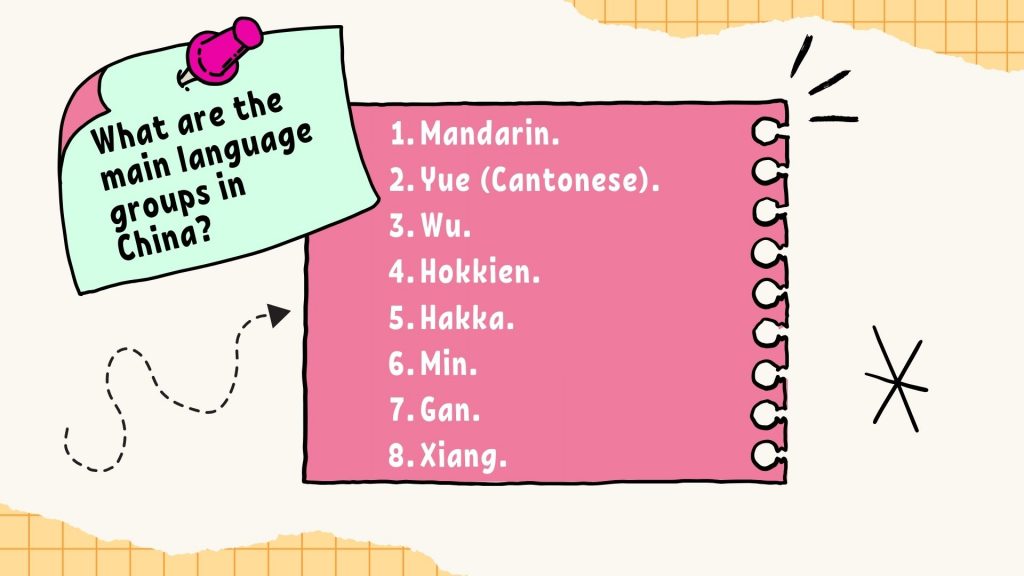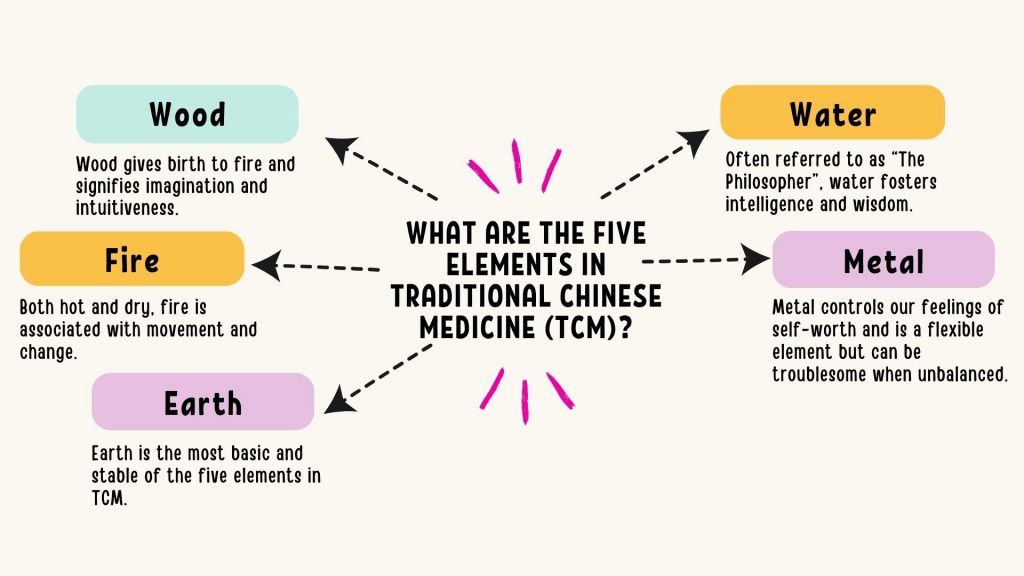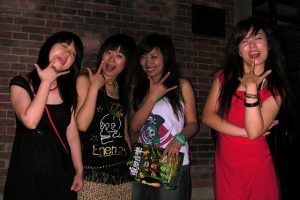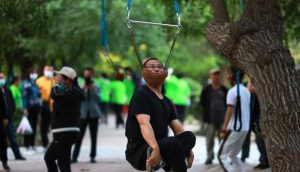
Welcome to our exploration into the top 15 fun and interesting facts about Chinese culture. From China’s diverse makeup of 56 ethnic groups, to the influence of ancient traditions on modern day life in China, join us as we journey through the top Chinese culture facts and their significance.
Top 15 Facts About China
1. China has only one time zone
Did you know that China has only one time zone, despite spanning over 5,000 kilometers from north to south and east to west? Conventionally, time zones are spaces of 15 degrees of longitude that change in one-hour intervals. This means that China in theory should span five time zones. In fact, from 1912 to 1949, that was the case. However, since 1949, China has used a single time zone (Beijing Time).
Interesting fact: In some regions of China, it is common for people to discuss times in both “local time” and Beijing time. This can lead to some confusion for travelers and locals alike!
2. China is made up of 56 ethnic groups
China is a vast country with a population of over 1.4 billion people, which is made up of 56 official ethnic groups. This includes the largest Han group that makes up over 92% of the population, or around 1.3 billion people. The smallest ethnic group in China is the Lhoba, which numbers around 4,000 people.
3. Over 300 languages and dialects are spoken in China
It shouldn’t come as a surprise that with so many ethnic groups, China is also home to an extensive list of languages and dialects. The Chinese languages are made up of eight main language groups, from which span over 300 subdialects. The most spoken language group in China is Mandarin, which has over one billion speakers globally. The dialect spoken by the least number of people in China is Huizhou Chinese, which has around four million speakers.
What are the main language groups in China?
- Mandarin. Mandarin has over one billion speakers globally and is the official language of China.
- Yue (Cantonese). With over 85 million speakers globally, Cantonese is the second most spoken language in China.
- Wu. The Wu-speaking region spans Shanghai, as well as Zhejiang and southeastern Jiangsu provinces. Heading on a trip to Shanghai? Visit our blog that explores the Shanghainese dialect.
- Hokkien. The Hokkien language group, which hails from Fujian in southeastern China, is widely spoken among the global Chinese diaspora. Owing to its links to international trade, is thought that there are now around 40 million speakers of Hokkien Chinese globally.
- Hakka. Hakka shares similarities with both the Mandarin and Yue (Cantonese) language groups. It is mainly spoken in eastern Guangdong, southern Fujian, western Yunnan and by overseas Chinese communities.
- Min. The Min Chinese varieties are spoken by over 80 million people, primarily in southeastern Fujian and Hainan Island.
- Gan. Hailing from Jiangxi province, Gan Chinese is spoken by around 25 million people.
- Xiang. As well as its spicy cuisine, Hunan is also infamous as the home of the Xiang language group. Xiang and its subdialects are spoken by around 35 million people.

4. Celebrations usually follow the Chinese lunar calendar
The Chinese lunar calendar is a lunisolar calendar that encompasses solar and lunar cycles that influence key social and religious celebrations in China. In modern times, the Gregorian calendar is used for civil purposes in China, such as in business and making appointments. However, when it comes to festivals and traditions, the Chinese lunar calendar takes precedence. Key dates in the Chinese lunar calendar include Chinese New Year (Spring Festival), Mid-Autumn Festival and Lantern Festival.
5. Everybody has a Chinese Zodiac animal
Do you know your Chinese Zodiac animal? The story and legend of the mythical animals that descended from heaven to celebrate the coming of spring is infamous to anybody with an interest in Chinese culture. The Chinese New Year animals change each year on a 12-year cycle. Upcoming animals in the Chinese Zodiac include Dragon (2024), Snake (2025), Horse (2026), Sheep (2027) and Monkey (2028).
Top tip: explore the personality traits are associated with each of the Chinese Zodiac animals!
6. Chinese cuisine is among the most varied in the world!
When living overseas, it can be easy to have a blinkered view of Chinese cuisine. However, there are a vast array of different food types and prominent flavors throughout China. Chinese cuisine is commonly organized into the Eight Great Traditions:
- Sichuan. Spicy flavors and red-hot chili peppers called Sichuan peppercorns.
- Cantonese. Think dim sum and other bite-sized delicious delights!
- Anhui. Wild herbs and fresh vegetables, including liberal use of bamboo in cooking!
- Shandong. Lots of braised and highly-flavored dishes.
- Fujian. Often served in a broth, Fujian cuisine uses techniques such as steaming and stewing.
- Jiangsu. As Jiangsu is near the sea, expect lots of seafood and seasonal ingredients that color match the dishes.
- Hunan. Highly spiced and sour, with uses of pickled vegetables.
- Zhejiang. Fresh and lightly flavored, Zhejiang cuisine is a great introduction to the wider varieties of Chinese cuisine.
7. Tea is very important in China
Tea is more than just a drink in China, encompassing centuries-old Chinese traditions. Beyond refreshment, tea in China is a conduit for cultural exchange. If you visit China, be sure to partake in a Gong Fu Cha (工夫茶) ceremony to observe the artistry and respect for the tradition of tea drinking in China.
8. Gestures in China differ to the West
Do you know that it’s rude in China to point with a single finger? Or that excessive hand movements are considered rude in Chinese culture? Gestures are a vital part of Chinese culture and traditions in China. It’s important to understand them when learning Chinese or visiting China. Want to learn more? Read our lowdown of the dos and don’ts of Chinese hand gestures.
9. There are prominent lucky and unlucky numbers in China
Numerology plays a vital role in Chinese traditions and culture. Chinese lucky and unlucky numbers influence important decisions and the price of purchases such as when choosing a car, phone number or where to live. The luckiest numbers in China are 8 (八), 2 (二), 6 (六) and 9 (九), which are held in the highest regard. The unluckiest numbers are 4 (四) and 13 (十三), so there are bargains to be had if you aren’t superstitious!
10. Colors are also auspicious in China
Auspiciousness doesn’t stop at numerology when exploring facts about Chinese culture. There are also lucky and unlucky colors. The luckiest color in Chinese culture is red, which represents success and good fortune. The unluckiest color in China is white, which signifies death and mourning. Traditionally, people wear white at funerals in China.
11. People follow Traditional Chinese Medicine (TCM) and Feng Shui
Traditional Chinese Medicine (TCM) and Feng Shui are intertwined pillars of traditional Chinese culture, both rooted in ancient philosophy and practices. TCM, which dates back thousands of years, emphasizes healing through herbal remedies, acupuncture, and the balance of Qi energy. Feng Shui, on the other hand, focuses on harmonizing individuals with their environments to promote health, wealth, and prosperity.
What are the five elements in Traditional Chinese Medicine (TCM)?
According to tradition, everything in the universe is based in Five Element Theory. We can use it to explain how we’re influenced by the world around us and how our internal body parts work in combination. The five elements in TCM are:
- Wood. Wood gives birth to fire and signifies imagination and intuitiveness.
- Fire. Both hot and dry, fire is associated with movement and change.
- Earth. Earth is the most basic and stable of the five elements in TCM.
- Water. Often referred to as “The Philosopher”, water fosters intelligence and wisdom.
- Metal. Metal controls our feelings of self-worth and is a flexible element but can be troublesome when unbalanced.

12. Calligraphy is art
Calligraphy is the artistic writing of Chinese characters and its history is steeped in tradition in Chinese culture. Each brush stroke portrays meaning and emotion, which reflect the artist’s inner thoughts and spirit. The beauty of Chinese language is truly brought alive through calligraphy and it is protected in UNESCO’s Intangible Cultural Heritage lists. Calligraphy works can also be registered as works of fine art under China’s Copyright Law.
13. China has the largest transport network in the world
China’s high-speed rail network is by far the longest in the world. In 2023 alone, China built over 1,700 kilometers of new high-speed railways. High-speed trains in China, also known as bullet trains, can reach speeds of over 400 kilometers per hour. As well as super-fast trains, China has over 177,000 kilometers of highways and 259 civil airports.
14. The Four Great Inventions of Ancient China
The Four Great Inventions of Ancient China are paper, gunpowder, the compass and printing. Paper as we know it was invented in China around 140 AD. The earliest reference to gunpowder in Chinese history dates back to 142 AD, whereas the compass can be traced back much further to 400 BC. Stone tablet rubbing – an early form of printing – was documented in China as early as 2,000 years ago!
Fun fact: The first ever book with a verifiable printing date was published in China in 868 AD. That’s almost 600 years ahead of the first printed book in Europe, which was produced in Mainz in 1455!
15. The Great Wall of China
How could we write a blog on Chinese culture facts without mentioning the Great Wall? The Great Wall stretches over 21,000 kilometers from Liaodong to the present-day Sino-Russian border and the Tao River. It took over 2,000 years to construct and is still a marvel to locals and visitors alike!
Did you know? In 2023, two construction workers caused irreparable damage to a section of the Great Wall when looking for a shortcut for their construction vehicles. Read this story in levelled Chinese language in our Premium lesson on the topic!
Conclusion
From China’s single time zone that spans its vast 9.6 million square kilometers of land area, to the majesty of the Great Wall, we hope you have enjoyed our exploration into Chinese culture and traditions.
Author:
Sean speaking to students at Beths Grammar School about his experience of learning Chinese, living in China and founding Newsdle and The Chairman’s Bao.
Sean studied Chinese and Spanish at University of Leeds and founded The Chairman’s Bao alongside Tom Reid in his final year of study in 2015. Current Managing Director of The Chairman’s Bao, he has overseen the company’s growth from university bedroom concept to an international force in the EdTech industry with over 200,000 individual users and over 400 global partner institutions. Sean also launched Newsdle alongside Tom Reid and Oliver Leach in 2021, for students and teachers of Spanish and French. In his spare time, Sean is still a keen language learner and runner. He also sits on the Board of charity Leeds Irish Health and Homes in the UK.


























